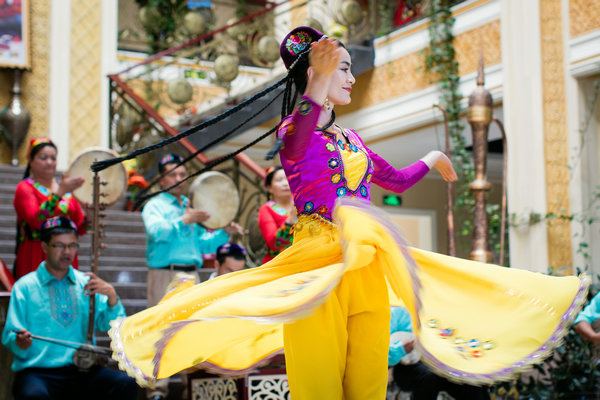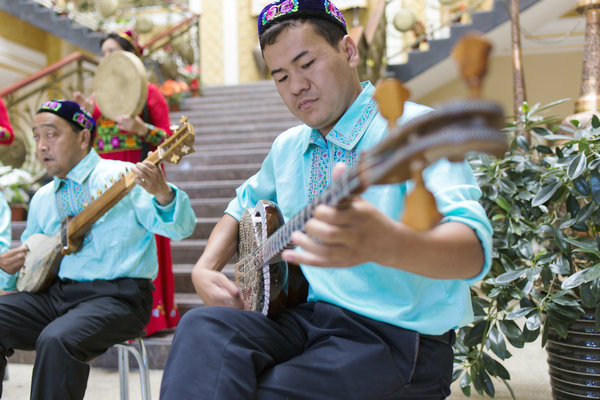Dozens seek to capture glimpses of Xinjiang
 0 Comment(s)
0 Comment(s) Print
Print E-mail China Daily, June 21, 2016
E-mail China Daily, June 21, 2016
|
|
|
Cultural heritage like traditional songs and dances in the Xinjiang Uygur autonomous region is the focus of a photography project. (Photo provided to China Daily) |
More than 30 photographers are spending three months in Northwest China's Xinjiang Uygur autonomous region to capture its natural and cultural landscapes.
The team will visit through August different parts of the region, including Hami, which is known for its sweet melons, and Turpan, home to the famous Flaming Mountain.
The project, initiated by Japanese camera maker Canon six years ago, aims to use photos and videos to showcase fading cultural heritage in China. Every year, it will organize one or two such trips.
"If you want to understand the vast land of Xinjiang, you have to come a few times, and each time you need to stay for a month at least," says Liu Bing, honorary president of the region's writers association.
The land is not only the largest in size at the provincial level in China but, more importantly, it's a place where the cultures of the East and West meet, integrating over thousands of years.
|
|
|
(Photo provided to China Daily) |
"From one place to another in the region, cultures, landscapes and languages change," he says.
Xie Chao, a participating photographer, says he was in Hami at the start of the trip earlier this month to focus on Hami Muqam, a cultural genre of the region.
Muqam refers to a variety of practices involving songs, dances, folk and classical music in Xinjiang. It's included on UNESCO's list of intangible cultural heritage.
Xie says he captures daily life in the area through the dance and music of the local people. They dance elegantly, very differently from the Dolan Muqam, which is another genre that stresses energy and power, and therefore has stronger body movements.
Liu, the expert, says people in Hami mostly farm fruit so their art is agrarian, while the Dolan people's musical expressions reflect the challenges they face in the Taklimakan Desert.
Xie and other photographers have also visited local embroidery houses in Hami, where the traditional skills are passed down through generations.
As for the Kyrgyz epic Manas, an elderly man of the area could recite it, but he died last year. Fortunately, people had made a video to document a recital before his death.
"It's important to use all kinds of methods to protect such cultural heritage," says Liu, adding that many of the practitioners are now old.
In the past two years, the photography project has shifted its attention to heritage along the ancient Silk Road. It has organized trips to Henan, Shaanxi and Gansu provinces. All the pictures and videos have been given to the local governments and the Ministry of Culture.
Lu Jie, communications director for Canon China, says the project found that a lot of heritage has been ruined by modern influences in the country but some has been revived through integration as well.
"We can't have these great cultural traditions only displayed in museums. So we have to act right now," she says.
Selected photographs taken on the ongoing trip will be displayed in Urumqi, the capital of Xinjiang, later in the year.








Go to Forum >>0 Comment(s)